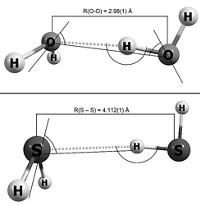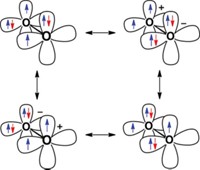Advertisement
Grab your lab coat. Let's get started
Welcome!
Welcome!
Create an account below to get 6 C&EN articles per month, receive newsletters and more - all free.
It seems this is your first time logging in online. Please enter the following information to continue.
As an ACS member you automatically get access to this site. All we need is few more details to create your reading experience.
Not you? Sign in with a different account.
Not you? Sign in with a different account.
ERROR 1
ERROR 1
ERROR 2
ERROR 2
ERROR 2
ERROR 2
ERROR 2
Password and Confirm password must match.
If you have an ACS member number, please enter it here so we can link this account to your membership. (optional)
ERROR 2
ACS values your privacy. By submitting your information, you are gaining access to C&EN and subscribing to our weekly newsletter. We use the information you provide to make your reading experience better, and we will never sell your data to third party members.
Physical Chemistry
Hydrogen Bonds To Phosphorus Observed
by Stu Borman
December 15, 2014
| A version of this story appeared in
Volume 92, Issue 50
Researchers have found unusual hydrogen bonds to phosphorus in three bimolecular alcohol-trimethylphosphine complexes and have measured their strengths. H-bonds do not usually form to P. In the new study, in which a hydroxyl H atom bonds with P in another compound, P bears a partial positive charge, making H-bond formation especially unlikely. The work was carried out by Henrik G. Kjaergaard and coworkers at the University of Copenhagen (J. Phys. Chem. Lett. 2014, DOI: 10.1021/jz502150d). P. G. Sennikov of the Russian Academy of Sciences, in Nizhny Novgorod, and coworkers earlier observed H bonding to P in phosphine. Kjaergaard and coworkers believe that case to be the only other experimental observations of the phenomenon. In their study, although trimethylphosphine’s P atom has partial positive charge, its electrostatic potential surface also has a negative-potential area around the lone pair, and the H-bonds form at that spot. “This work clearly shows that we cannot continue to think of charge distribution as spherical in atoms, molecules, or even ions,” Kjaergaard says.




Join the conversation
Contact the reporter
Submit a Letter to the Editor for publication
Engage with us on Twitter